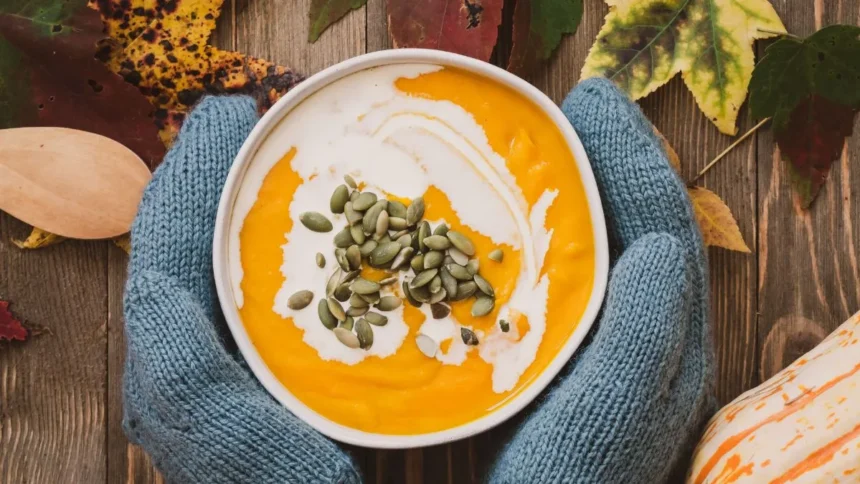Food is more than just sustenance—it is a connection to culture, identity, and emotion. Across the globe, certain dishes evoke a sense of comfort and familiarity, providing solace in times of joy or distress. These “comfort foods” vary widely but share a universal appeal, often steeped in tradition and personal meaning.
What Are Comfort Foods?
Defining Comfort Foods
Comfort foods are dishes that provide emotional satisfaction and evoke a sense of well-being. Often tied to childhood memories, familial connections, or cultural traditions, these foods are characterized by their ability to soothe and nourish, both physically and emotionally.
Why They Matter
Comfort foods play a vital role in human experience, offering solace during difficult times and enhancing celebrations. They are not merely about taste but also about the feelings they invoke, making them a powerful medium for connection and reminiscence.
The Cultural Significance of Comfort Foods
Connection to Traditions
Many comfort foods are deeply rooted in cultural traditions, reflecting centuries of culinary heritage. From Thanksgiving turkey in the United States to Lunar New Year dumplings in China, these dishes are a testament to the importance of food in cultural rituals.
Reflecting Regional Identities
Comfort foods often embody the essence of a region, showcasing local ingredients, flavors, and cooking methods. Whether it’s Italy’s creamy risotto or India’s spiced biryani, these dishes offer a window into a community’s way of life.
Evoking Nostalgia
One of the defining characteristics of comfort foods is their ability to transport individuals back to cherished moments. A bowl of chicken soup might remind someone of a mother’s care, while freshly baked bread could recall a family gathering.
Global Comfort Foods by Region
North America
- Macaroni and Cheese (USA): This creamy, cheesy dish is a staple comfort food in American households, often associated with childhood meals.
- Poutine (Canada): A combination of French fries, cheese curds, and gravy, poutine is a Canadian classic that brings warmth on cold days.
Europe
- Shepherd’s Pie (UK): A hearty dish of minced meat and mashed potatoes, shepherd’s pie reflects the simplicity and comfort of British cuisine.
- Goulash (Hungary): This rich stew, made with meat, vegetables, and paprika, represents Hungarian culinary traditions.
Asia
- Ramen (Japan): A steaming bowl of noodles in savory broth, ramen is a beloved comfort food, offering endless variations.
- Khichdi (India): A simple mix of rice and lentils, khichdi is often considered a “food of the soul” in Indian households.
Africa
- Jollof Rice (West Africa): A flavorful one-pot dish of rice, tomatoes, and spices, jollof rice is a symbol of celebration and unity across countries like Nigeria and Ghana.
- Bunny Chow (South Africa): A hollowed-out bread loaf filled with curry, bunny chow is a street food favorite with deep cultural roots.
South America
- Empanadas (Argentina): These stuffed pastries, filled with meat, cheese, or vegetables, are a versatile and comforting snack.
- Feijoada (Brazil): A hearty black bean stew with pork, feijoada is a dish that brings families together.
Comfort Foods in the Modern World
Globalization and Fusion Cuisine
As cultures blend and people migrate, comfort foods have evolved, incorporating elements from different cuisines. Dishes like Korean tacos or sushi burritos exemplify how traditional recipes adapt and thrive in new contexts.
The Role of Comfort Foods During Crises
In times of uncertainty, comfort foods offer psychological relief. The COVID-19 pandemic, for instance, saw a surge in home baking and cooking as people turned to familiar dishes for solace.
Health, Comfort, and Balance
Nutritional Aspects
While comfort foods are often rich and indulgent, they can also be nutritious. Many traditional recipes, such as Mediterranean lentil soups or Japanese miso dishes, balance flavor with health benefits.
Emotional Well-Being
The act of preparing and consuming comfort foods can boost mood, reduce stress, and foster a sense of connection. Sharing these meals with loved ones amplifies their emotional impact.
Preserving and Celebrating Comfort Foods
As globalization accelerates, preserving traditional comfort foods becomes essential to maintaining cultural identities. Celebrating these dishes through festivals, cookbooks, and culinary programs ensures their legacy for future generations.
Efforts to document and share recipes, along with encouraging sustainable sourcing of ingredients, also contribute to preserving the authenticity and essence of comfort foods.
Conclusion
Global comfort foods are more than just dishes—they are cultural treasures, embodying history, identity, and emotion. From the spices of jollof rice to the creamy richness of mac and cheese, these foods connect people to their roots while fostering a shared sense of humanity.
As the world becomes more interconnected, the role of comfort foods in bridging cultures and offering solace remains timeless. Whether enjoyed in a bustling city or a quiet kitchen, they remind us of the universal power of food to heal, connect, and celebrate.


